
Mapping Standards and Data Quality
for the IUCN Red List Categories and Criteria
!"#$%&'()*)+(
,-"./"01"#(23)45(
6#".7#"8(19(:"8(;%$/(<"=>'%=7?(@&#A%'B(C#&D.

Contents
2
Contents 2
1 Spatial data and the IUCN Red List 4
1.2 Reasons for a distribution map 4
2 What distribution data are needed for Red List assessments? 5
2.1 Textual description and SIS 5
2.2 Countries of occurrence (COO) 6
2.3 Distribution map 6
3 Taxon and system differences 7
3.1 Terrestrial and marine taxa 8
3.2 Inland water taxa (Freshwater) 8
4 Attributes for distribution maps 9
4.1 Polygon and point data 9
4.1.1 Required polygon and point attributes 9
4.1.2 Recommended polygon and point attributes 11
4.2 Point data 13
4.2.1 Optional point data 13
5 Coding of Presence, Origin and Seasonality for distribution maps 14
5.1 Presence codes 14
5.2 Origin Codes 16
5.3.1 Presence, Origin and Seasonality quick reference 17
6 Spatial information in SIS 18
6.1 Countries with multiple distribution codes in the spatial data 18
7 Extent of occurrence (EOO), area of occupancy (AOO) 19
7.1 Extent of occurrence (EOO) 19
7.2 Area of occupancy (AOO) 21
8 Generating a distribution map 23
8.1 Software and formats 23
8.2 Tools 24
8.3 Standard GIS layers / basedata 24
8.4 Mapping consistency 25
8.5 Sensitive species guidelines 26
9 What will happen to your map data? 27
9.1 Countries of occurrence (COO) data 28
9.2 Legend combinations from distribution codes 28
10.0 Updates regarding Spatial Data 28
10.1 Presence Codes (last updated 2014) 28
10.1.1 Implications of updated Presence for existing spatial data 28
10.2 Origin code Assisted Colonisation (last updated 2016) 29
10.3 Legend Update (last updated 2016) 29
11 Abbreviations, acronyms and definitions 29

1 Spatial data and the IUCN Red List
Spatial data are a key component of the IUCN Red List from the criteria that measure
species distributions to spatial filtering on the Red List website, and detailed analysis of
distribution maps to support conservation. This document provides an overview of the
different elements of spatial data on the Red List and outlines what kinds of spatial data
Red List assessors are required to provide with each assessment, along with relevant
formats and standards, with a particular focus on the distribution map.
1.1 Why spatial data are required
Spatial data are some of the most highly sought-after data on the IUCN Red List as they
are crucial information for conservation planning. Each assessment should provide
spatial data in some form.
Spatial data are essential for supporting assessments done under IUCN Red List Criteria
B and D2 (and arguably also for demonstrating that the thresholds for these criteria are
not met).
All Assessors should produce the most accurate depiction of a taxon’s distribution based
on their knowledge and the available data, in a format that is considered most
appropriate for that taxon to inform conservation action. This is used to generate the
maps displayed on the IUCN Red List website.
1.2 Reasons for a distribution map
A key component of spatial data is the distribution map (see section 2.3), which is a
depiction of a taxon’s distribution for communication and/or conservation planning
purposes; it may not equate to either the spread of extinction risk (i.e., extent of
occurrence) or the occupied range area (i.e., area of occupancy) as defined by the IUCN
Red List Categories and Criteria.
There are three main reasons for creating a distribution map for taxa being assessed for
the IUCN Red List:
● Informing Red List assessments: Distribution maps can help to inform Red List
assessments by supporting calculations of some parameters used in the assessment
process, such as the extent of occurrence (EOO).

● Helping to identify conservation priorities: Spatial data can be used for analyses,
which can inform conservation planning and policy, identify priority areas for
conservation, identify gaps in scientific knowledge, and help inform business
decisions (e.g., where not to expand development).
● Visual representation: A distribution map provides a visual representation of a
taxon’s distribution. By combining spatial data for many taxa and analysing these
alongside other Red List data (e.g., Red List Category), informative maps can be
prepared to, for example, highlight areas with high numbers of threatened species.
2 What distribution data are needed for Red List assessments?
Spatial data are required to support all new IUCN Red List assessments, except for taxa of
unknown provenance (e.g., some Data Deficient taxa) (see Annex 1 of the Rules of
Procedure). Spatial information can be grouped into three elements:
1. Textual description of the distribution (Geographic Range Information).
2. Countries of occurrence (COO), coded by presence, origin and seasonality.
3. A distribution map that represents the best available depiction of the historical,
present and projected distribution of a taxon – also coded by presence, origin and
seasonality.
2.1 Textual description and SIS
A concise narrative of currently available information on the geographic range of the
taxon is required supporting information for all taxa that are not assessed as Least
Concern (Table 2 of Annex 1 of the Rules of Procedure). For taxa that are particularly
sensitive to collecting or hunting, it is prudent to avoid providing information that allows
people to see exactly where the taxon can be found, but a less precise summary should
be provided.
It is important to provide documentation in the assessment on how the map was created
and the data sources/methods used (in SIS (Species Information Service) this is recorded
within the Geographic Range text and the Map Status fields).
It is mandatory to fill the Map Status field in SIS, which can take the values below:
• Done – the map has been completed and will be provided as part of the
assessment, and will be published.

• Missing – the map is missing and needs to be located. A submitted assessment
with this status will not be published.
• Incomplete – the map will be provided, but it is known not to be complete e.g.
there wasn’t enough information to map certain part of the range. It will be
published. A reason will need to be provided in the justification box in SIS.
• Not Possible – making a distribution map for the species is not possible e.g.
distribution is only known at coarse country level, or for Data Deficient species
where distribution is not known. A reason will need to be provided in the
justification box in SIS. A submitted assessment with this status can be published
without a map.
See the Supporting Information guidance document on the IUCN Red List website for
more information.
2.2 Countries of occurrence (COO)
The countries where the taxon occurs must be entered into SIS, with the appropriate
distribution codes for Presence, Origin and Seasonality (see section 5.0 for an
explanation of the Presence, Origin and Seasonality codes). Assessors need to ensure
that the Countries of Occurrence (COO) on the spatial map are consistent with those
listed in SIS. In future, there may be some functionality to help automate this process –
but it will still be the Assessor’s responsibility to ensure that the COO in SIS correspond
to those on the spatial map. See section 6.0 (Spatial information in SIS) for more
information.
To minimize inconsistencies between SIS and the distribution map, it is also crucial to
make sure that the appropriate recommended country basemap dataset is used (this is
available from the IUCN Spatial Data Resources page on the IUCN Red List website).
2.3 Distribution map
We encourage Assessors to provide the best possible map they can make (i.e., as
accurate as possible considering the available data) to better support/inform
conservation planning and actions. To ensure efficiency and ease of data management,
it is preferable to submit the representation of the geographic range (i.e., distribution
map data) in the following formats (can be one or a mixture of the below formats):
1) Occurrence Data (Point/s): The historical, present and projected occurrence of
a taxon is referenced by a set of coordinates known as a point locality.
2) Polygon Data: The historical, present and possible distribution of a taxon’s
occurrences is referenced by a polygon or set of polygons.
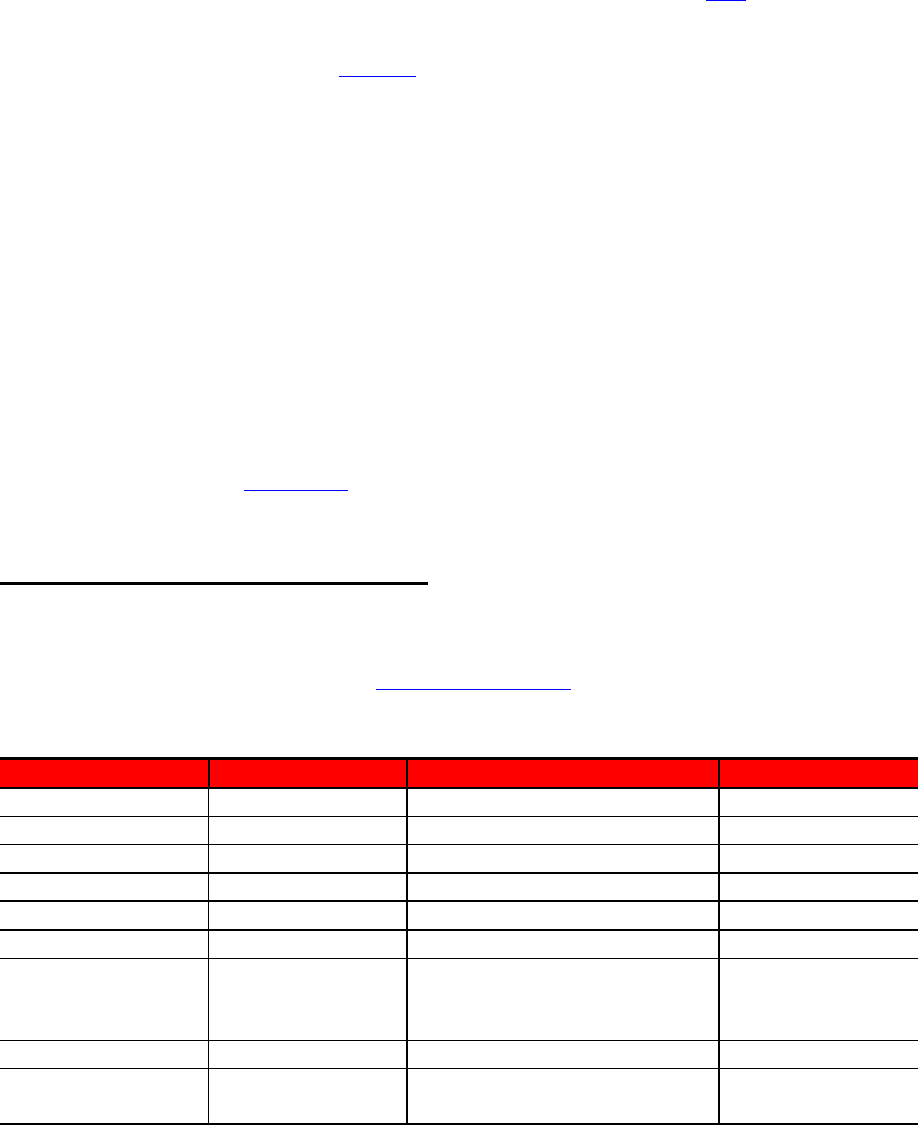
3) Basins: The historical, present and possible distribution of a taxon’s occurrences
is referenced by a basin (HydroBASINS) or a set of basins. Basins is used as a
short term for HydroBASINS – more information can be found here.
The recommended projection is WGS84 (World Geodetic Survey 1984).
The distribution map (commonly referred to as “limits of distribution” or “field guide”
map) aims to provide the current known distribution of a taxon within its native,
historical and introduced range. The limits of distribution are determined by using
known occurrences of the taxon, along with knowledge of habitat, elevation limits, and
other expert knowledge of the taxon and its range. In most cases the distribution is
depicted as polygons. Essentially, a polygon displays the limits of a taxon’s distribution,
and is intended to communicate that the taxon probably only occurs within the polygon,
but it does not mean that it is distributed equally within that polygon or occurs
everywhere within that polygon.
Options 1,2 and 3 above are not mutually exclusive; an assessment can be supported by
a combination of occurrence data and polygons. Independent of method used, a
minimum set of attribute data (metadata) should be provided; the attribute information
is described further in section 4.0.
3 Taxon and system differences
Table 1 shows the preferred approaches (i.e., polygons, basins, points) for different
taxonomic groups and systems. These are not intended to be strict rules; for any deviations,
please contact the GIS team within the IUCN Red List Unit.
Table 1: Preferred approaches by taxa and by system.
Group
Terrestrial
Inland Water
**
Marine
Mammals
Points Polygons
Polygon informed by basin
Points; Polygons
Birds
Points; Polygons
Polygon informed by basin
Points; Polygons
Amphibians
Points; Polygons
Polygon informed by basin
N/A
Reptiles
Points; Polygons
Polygon informed by basin
Points; Polygons
Fishes
N/A
Points; Basins
Points; Polygons
Molluscs
Points; Polygons
Points; Basins
Points; Polygons
Odonata and
ecological
equivalents
Basins
Points; Basins
Points; Polygons
Crustaceans
Points; Polygons
Points; Basins
Points; Polygons
All other
invertebrates
Points; Polygons
Points; Basins
Points; Polygons

Plants*
Points; Polygons
Points; Basins
Points; Polygons
Fungi
Points; Polygons
N/A
N/A
* For plants, most experts collect point locality data but do not produce polygon maps (with some exceptions,
e.g., cacti). For assessments that are accompanied by points only, it is recommended that a Minimum Convex
Polygon (MCP) map (equivalent to the maximum EOO as defined in this document) is produced, where
possible and appropriate, for display on the IUCN Red List website along with the points, and which could
also be used for analysis purposes.
** “Inland Water” includes taxa occurring in freshwater, brackish and estuarine habitats. Wherever it applies,
points should be provided if more specific location of the taxa within the basin is known.
3.1 Terrestrial and marine taxa
A taxon’s distribution can be provided either as point or polygon data. For polygon,
areas of unsuitable habitat, climate or physical geography (e.g. altitude, bathymetry,
hydrology) should be removed to provide a refined range.
3.2 Inland water taxa (Freshwater)
The distribution map of inland water taxa is highly recommended to be made using the
official HydroBASINS sub-basin layer, available from the IUCN Spatial Data
Resources page on the IUCN Red List website. HydroBASINS are available in different
resolutions (size of sub-basins), with the smaller sub-basins (e.g., levels 10 and 12)
being nested within larger sub-basins (e.g., level 8). The appropriate resolution to use
will depend on the level of knowledge of the taxon as well as size of its distribution
range.
For inland water taxa, as with other groups, the distribution map should represent the
best possible representation of the distribution. For those inland water taxa with
distributions more restricted than the finest scale HydroBASINS layer (e.g., the location
of a cave or small wetland to which a taxon is restricted), the range should be mapped
as a polygon reflecting the specific distribution, rather than generalising to the finest
scale HydroBASIN layer. By using a coarser HydroBASIN layer, (e.g., where a taxon
only occurs at an edge of the basin or only in a main channel), this will inflate the MCP
(see EOO description below).
If point data are being provided for inland water taxa, assessors are strongly encouraged
to provide the corresponding HydroBASINS data as well. HydroBASINS data are used
in multiple projects coordinated by the IUCN Freshwater Biodiversity Unit and
providing these data will ensure the maps are included as part of large scale analyses
using this type of spatial data.
More detailed information about mapping of inland water taxa can be found on the
IUCN Spatial Data Resources page on the IUCN Red List website.

4 Attributes for distribution maps
For the distribution map, there is a list of data attributes which must be recorded for both
polygon and point data. These attributes help describe the taxon’s distribution. Please refer
to the standards for Points and Polygons on the Spatial Resources Page of the IUCN Red
List website.
Tables 2 and 3 list the standard attributes for spatial data; the codes used to indicate
Presence, Origin and Seasonality. These codes are also used to create legends for the
distribution map (see section 9.2).
Please note that only the Required and Recommended fields are displayed in Tables 2 and
3 – more information on these can be found on the Spatial Resources Page.
The spatial attributes field names are limited to 10 characters in order to match the
Shapefile format (i.e. the Shapefile format does not allow field lengths of greater than 10
characters).
4.1 Polygon and point data
4.1.1 Required polygon and point attributes
Table 2 lists the Required attributes for polygon and point data. Note that some of
these attributes are taxon dependent: these are the attributes described as “[Required
(if relevant)]” in the Description column. For example, polygon depicting the
distribution of a subspecies (e.g., Panthera leo ssp. persica) the subspecies attribute
field must be completed.
Table 2: Required attributes for polygons and points (see * which indicates which
fields apply to polygons or points)
Field
Description
Notes
Polygons
/Basins
Points
ID_NO
Unique ID for the Taxon
Species taxon ID in SIS
Ö
Ö
HYBAS_ID
HydroBASIN ID *
Only required if HydroBASINS
have been used for mapping
the data
Ö
BINOMIAL
Scientific name of the species
This must match the
corresponding field in SIS
Ö
Ö
PRESENCE
Is/Was the species in this area
See Presence coding
Ö
Ö
ORIGIN
Why/ How the species is in
this area
See Origin coding (default is “1”
if not indicated)
Ö
Ö

SEASONAL
What is the seasonal
presence of the species in the
area
See seasonal coding (default is
“1” if not indicated)
Ö
Ö
COMPILER
Name of the individual/s or
institution responsible for
generating the taxon
distribution, if not IUCN.
Names should be given in full
(e.g., John Smith; NatureServe;
World Conservation Monitoring
Centre, etc). If not indicated,
this will default to “IUCN”
Ö
Ö
YEAR
Year in which the taxon
distribution was mapped or
compiled, or modified
If not indicated, this will default
to the current year
Ö
Ö
CITATION
Individual/s or institution
responsible for providing the
data
This must be the same
throughout the file, and is how
the data points will be credited
on the IUCN Red List. If not
indicated, this will default to
"IUCN (International Union for
Conservation of Nature)"
Ö
Ö
DEC_LAT
The graphical latitude in
decimal degrees, e.g. -41.097
Positive values are North of the
equator; negative values are
South of it. Legal values lie
between -90 and 90.
Ö
DEC_LONG
The geographical longitude in
decimal degrees, e.g. -121.25
Positive values are East of the
Greenwich Meridian; negative
values are West of it. Legal
values lie between -180 and
180
Ö
SPATIALREF
The ellipsoid, geodetic datum
or spatial reference system
(SRS) upon which the
geographic coordinates given
in dec_lat and dec_long as
based. Data is preferred in
WGS84. If Blank, will default
to WGS84
For e.g., EPSG:4326; WGS84;
NAD27; Campo Inchauspe;
European 1950; Clarke 1866.
Ö
SUBSPECIES
Subspecies Name/Epithet
[Required if relevant]
Only if assessed at the
subspecies level. This must
then match the corresponding
field in SIS. For e.g., “Panthera
leo ssp. persica”
Ö
Ö
SUBPOP
Subpopulation Name/Epithet
[Required if relevant]
Only if assessed at the
subpopulation level, for e.g.,
“Chelonia mydas Hawaiian
subpopulation”
Ö
Ö
DATA_SENS
Flags up whether or not the
polygon distribution/data
point is sensitive. This is most
likely to be the case if the
Yes or No field. If “Yes”, then
the field “Sens_comm” should
be completed
Ö
Ö
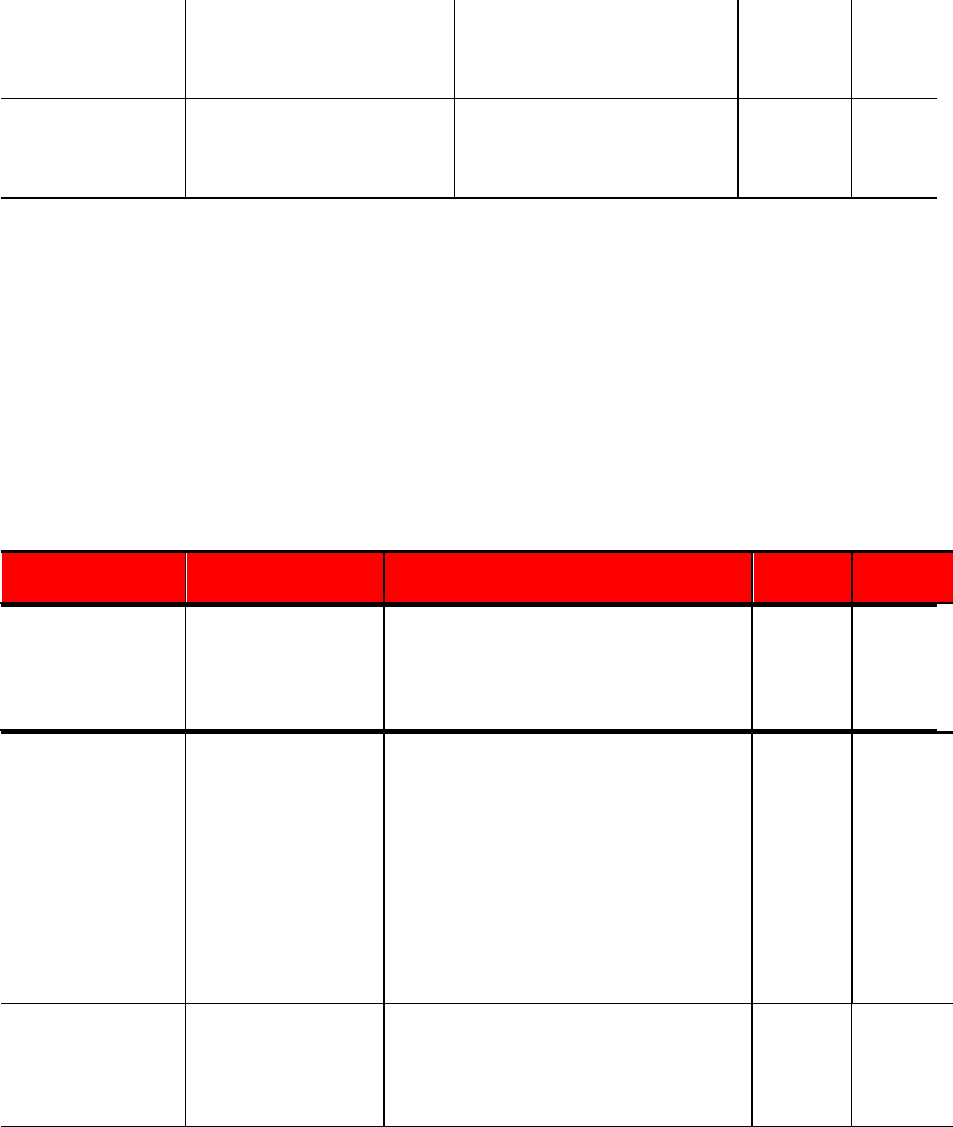
polygon/s or point effectively
correspond to individual
localities. [Required if data is
sensitive]
SENS_COMM
Comments on why the data
are considered sensitive
[ Required if DATA_SENS is
‘Yes’ ]
Max 255 characters.
Ö
Ö
• HydroBASINS: If basins have been used to provide distribution data then the
HYBAS_ID, which is the unique identifier of that HydroBASIN where the taxon
has been mapped, should also be provided
4.1.2 Recommended polygon and point attributes
The Recommended attributes are listed in Table 3. Although they are not absolutely
required, these attributes should be recorded whenever this information is available,
so we encourage effort being made to enter the relevant information into these fields
as much as possible.
Table 3: Recommended attributes for polygons and points
Field
Definition
Notes
Polygon/
Basin
Point
EVENT_YEAR
The four-digit year in
which the Event
(object or
observation)
occurred -
For e.g., 2008
Ö
SOURCE
Provide source of
distribution range /
point data
Relates to the primary source used to
compile each polygon or point, especially
in a recently published range map, or a
set of point data. If compiled in a
workshop, or compiled from numerous
sources, then field may be left empty.
References should be in the format
“AuthorX and AuthorY, date” and the
reference should be in the corresponding
IUCN Red List assessment [max 255
characters]
Ö
Ö
CATALOG_NO
An identifier
(preferably unique)
for the record within
the data set or
collection
Name of the museum or herbarium and
the specimen number
Ö

DIST_COMM
Distribution
comments that refer
directly to the
polygon or point
Examples include whether the polygon
represents the type locality, names of
protected areas or geographical features,
and so forth. May also include specific
notes on presence, origin or seasonality
[max 255 characters]
Ö
Ö
ISLAND
Name of the island
where the polygon
or point is on
This relates mainly to very small islands or
atolls (e.g. Midway Atoll; Meemu Atoll;
Bohol)
Ö
Ö
TAX_COMM
Taxonomic
comments that refer
directly to the
polygon. Includes
notes on polygons
pertaining to
subspecies, varieties
or subpopulations.
Max 255 characters
Ö
Ö
BasisOfRec
The specific nature of
the data record. (See
IUCN Standard
Attributes for Point
Locality Data)
PreservedSpecimen, FossilSpecimen,
LivingSpecimen, HumanObservation,
MachineObservation, StillImage,
MovingImage SoundRecording
Ö
Notes:
1) For entries in the Source attribute field that approach the 255 character limit, apply standard
abbreviations and then define these within the reference list within SIS.
2) If the spatial data is sensitive, please fill the DATA_SENS and SENS_COMM fields
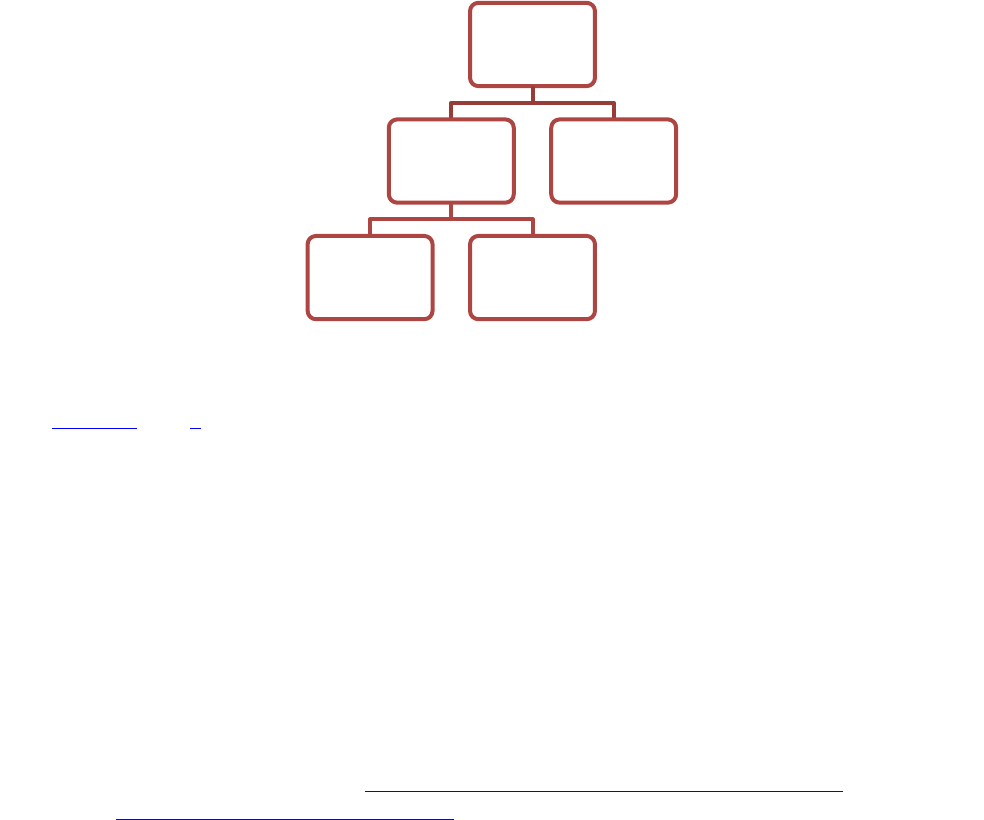
4.2 Point data
Point data fields/attributes are divided into two groups: core and optional. Within core
there are two divisions: required and recommended. Recommended data may be
required if relevant to the spatial data.
We strongly encourage point data to be provided if they are available, together with the
polygon data, or by themselves, and they should follow the point standards defined in
Tables 2 and 3. In spatial analyses (e.g., overlays) involving a mixture of point and
polygon data for different species, methods would have to:
1. Use MCP (EOO) rather than mapped range (equating to degradation of the data
for taxa mapped as polygons); or
2. Exclude the points; or
3. Accept that the results will not be entirely comparable between taxa mapped using
polygons and those mapped using points.
4.2.1 Optional point data
Optional attributes may be used and some are taxon dependent. The list of optional
attributes can be found in the IUCN Standard Attributes for Point Locality Data (see
the IUCN Spatial Data Resources page on the IUCN Red List website).
NOTE: Please make sure to use the Points and Polygons standard file on the Spatial Data
Resources page as this will be updated with the most recent information, and also a log to
indicate what has changed.
Points fields
Core
Required
Recommended
Optional

5 Coding of Presence, Origin and Seasonality for distribution
maps
Every polygon and point occurrence in the distribution map requires Presence, Origin and
Seasonality to be recorded using the relevant codes from Tables 4, 5 and 6.
5.1 Presence codes
Table 4 outlines the definitions for the various coding options for a taxon’s Presence
within a particular area. These Presence codes and their definitions apply to both spatial
data (i.e., polygons and point data) and non-spatial data (e.g., Countries of occurrence
in SIS).
Note that the presence codes were updated in February 2014, so please make sure that
you check the new definitions, and understand what implications this might have for
any existing spatial data, if these have not been migrated yet (see section 10.1.1). See
the EOO section (section 7.1) to check how this parameter should be calculated using
the revised Presence codes.

Table 4: Codes for recording the Presence of a taxon within a polygon or point
occurrence.
CODE
PRESENCE
DEFINITION
1
Extant
The species is known or thought very likely to occur currently in the area, which
encompasses localities with current or recent (last 20-30 years) records where
suitable habitat at appropriate altitudes remains (see note 3). Extant ranges
should be considered in the calculation of EOO. When mapping an “assisted
colonisation” it is important to note that this range should be treated as Extant.
2
Probably Extant
This code value has been discontinued for reasons of ambiguity. It may exist in
the spatial data but will gradually be phased out.
3
Possibly Extant
There is no record of the species in the area, but the species may possibly
occur, based on the distribution of potentially suitable habitat at appropriate
altitudes, although the area is beyond where the species is Extant (i.e., beyond
the limits of known or likely records), and the degree of probability of the
species occurring is lower (e.g., because the area is beyond a geographic
barrier, or because the area represents a considerable extension beyond areas
of known or probable occurrence). Identifying Possibly Extant areas is useful
to flag up areas where the taxon should be searched for. Possibly Extant ranges
should not be considered in the calculation of EOO.
4
Possibly Extinct
The species was formerly known or thought very likely to occur in the area
(post 1500 AD), but it is most likely now extirpated from the area because
habitat loss and/or other threats are thought likely to have extirpated the
species, and there have been no confirmed recent records despite searches.
Possibly Extinct ranges should not be considered in the calculation of EOO.
5
Extinct
The species was formerly known or thought very likely to occur in the area
(post 1500 AD), but it has been confirmed that the species no longer occurs
because exhaustive searches have failed to produce recent records, and the
intensity and timing of threats could plausibly have extirpated the taxon.
Extinct ranges should not be considered in the calculation of EOO.
6
Presence Uncertain
A record exists of the species' presence in the area, but this record requires
verification or is rendered questionable owing to uncertainty over the identity
or authenticity of the record, or the accuracy of the location. Presence
uncertain records should not be considered in the calculation of EOO.
Notes:
1. These codes are mutually exclusive, e.g. a polygon coded as “Extant” cannot also be coded as
“Extinct”.
2. In accordance with the Red List Categories and Criteria, Extant polygons can include inferred or
projected sites of present occurrence (see the Guidelines for Using the IUCN Red List Categories and
Criteria for further guidance).
3. When there is uncertainty as to whether or not a species still occurs in an area in which it was formerly
known to occur (usually because there have been no recent surveys), it is necessary for Assessors to
judge whether it is more appropriate to assign a coding of Extant or Possibly Extinct (based on
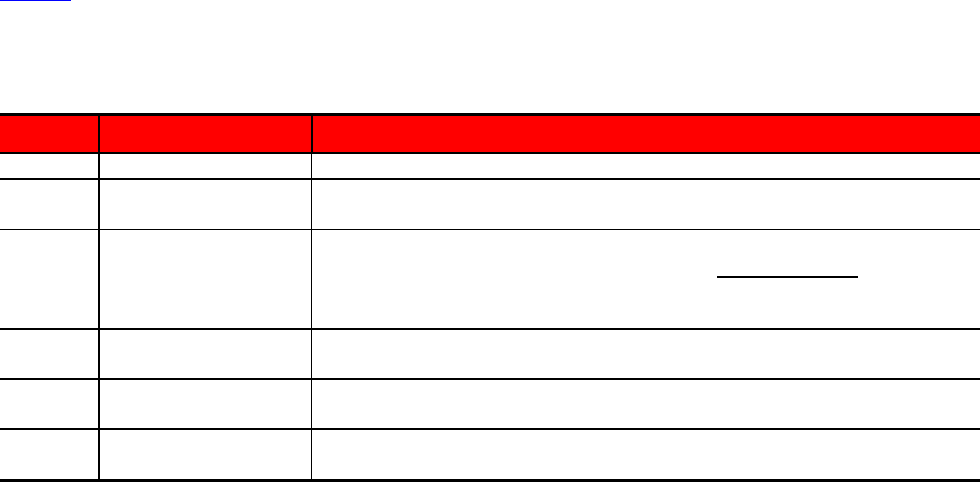
available knowledge of remaining habitat, intensity of threats, adequacy of searches, and other
evidence).
4. EOO calculations should be based on polygons coded as Extant only.
5. The old Presence code 2 (Probably Extant) is now discontinued. See section 10.1.1 for more
information
5.2 Origin Codes
Table 5 outlines the definitions for the various coding options for a taxon’s Origin within
a particular area. These Origin codes and their definitions apply to both spatial data (i.e.,
polygons and point data) and non-spatial data (e.g., Countries of occurrence in SIS)
Table 5: Codes for recording the Origin of a taxon within a polygon or point occurrence.
CODE
ORIGIN
DEFINITION
1
Native
The species is/was native to the area.
2
Reintroduced
The species is/was reintroduced within its known historical range through
either direct or indirect human activity
3
Introduced
The species is/was introduced outside of its known historical distribution range
through either direct or indirect human activity. Does not include species
subject to assisted colonisation. Includes species intentionally moved outside
of its native range to perform a specific ecological function.
4
Vagrant
The species is/was recorded once or sporadically, but it is known not to be
native to the area.
5
Origin Uncertain
The species’ provenance in an area is not known (it may be native,
reintroduced or introduced)
6
Assisted Colonisation
Species subject to intentional movement and release outside its native range
to reduce the extinction risk of the taxon.
Notes:
1. EOO estimates should be based on Origin codes 1, 2, and 6.
2. The codes are mutually exclusive, e.g. a polygon coded as Introduced cannot also be coded as
Native.
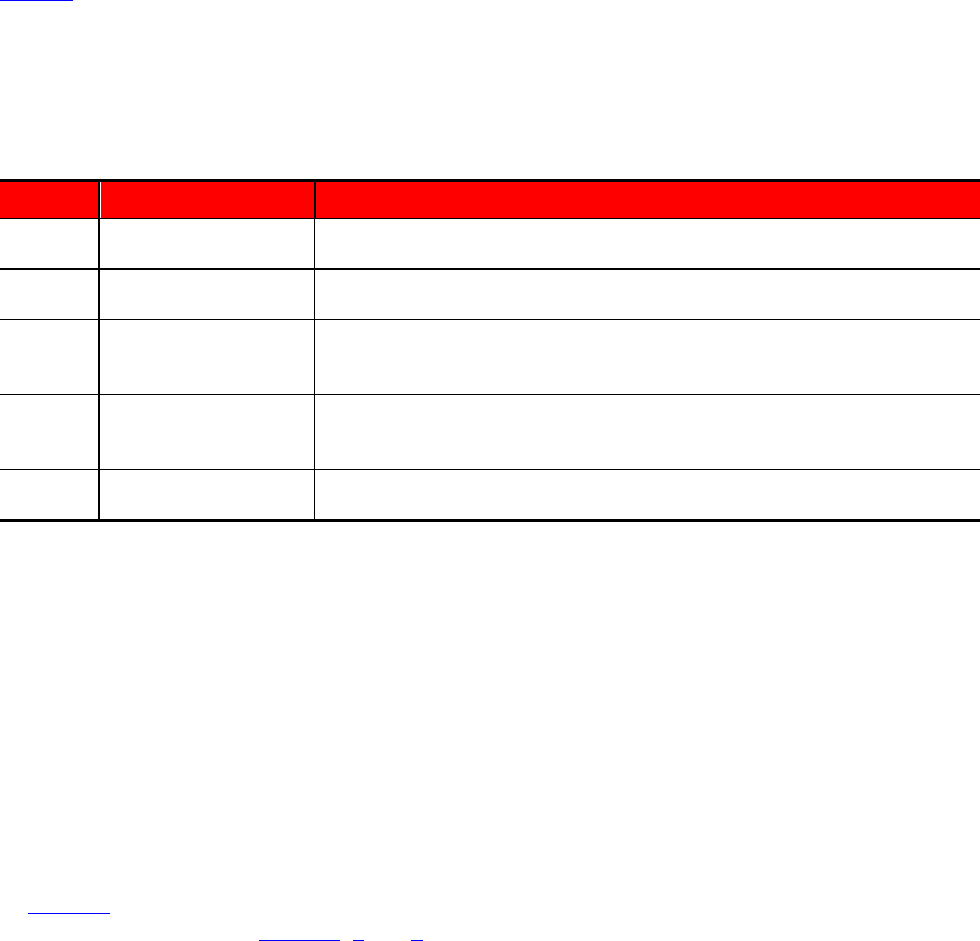
5.3 Seasonality Codes
Table 6 outlines the definitions for the various coding options for a taxon’s Seasonality
within a particular area. These Seasonality codes and their definitions apply to both
spatial data (i.e., polygons and point data) and non-spatial data (e.g., Countries of
occurrence in SIS).
Table 6: Codes for recording the Seasonality of a taxon within a polygon or point
occurrence.
CODE
SEASONALITY
DEFINITION
1
Resident
The species is/was known or thought very likely to be resident throughout the
year
2
Breeding Season
The species is/was known or thought very likely to occur regularly during the
breeding season and to breed and capable of breeding
3
Non-breeding Season
The species is/was known or thought very likely to occur regularly during the
non-breeding season. In the Eurasian and North American contexts, this
encompasses ‘winter’.
4
Passage
The species is/was known or thought very likely to occur regularly during a
relatively short period(s) of the year on migration between breeding and non-
breeding ranges.
5
Seasonal Occurrence
Uncertain
The species is/was present, but it is not known if it is present during part or all
of the year.
Notes:
1. ‘Regularly’ means known or thought to occur in at least 30% of years. Where it is deemed important
to record the occurrence of breeding/passage etc. for a species which occurs less often than 30% of
years (e.g. because the population is now tiny), the category can be ticked, but a comment added to
the Notes field (e.g. only recorded in 2 years during 1985-2000).
2. If the species does not regularly breed, but there are occasional breeding records, this can be noted
in the “Dist_Comm” field.
3. If there is insufficient information to be confident of assigning Non-breeding Season vs. Passage
categories, a best guess should be made, and a comment entered in the Notes field that some
ambiguity exists. Where there is extreme uncertainty, the ‘Seasonal Occurrence Uncertain’ value
should be used.
5.3.1 Presence, Origin and Seasonality quick reference
Table 7 presents a “quick reference” summary of the Presence, Origin and
Seasonality codes from Tables 4, 5 and 6.
Please note that these codes are mutually exclusive within the columns. For example,
a polygon coded as Presence “1 (Extant)” cannot also be coded as “5 (Extinct)”;
however, Presence can be coded as “1 (Extant) and Origin as “5 (Origin uncertain)”
for the same polygon.
Table 7: Summary of Presence, Origin and Seasonality codes.

Code
Presence
Origin
Seasonality
1
Extant
Native
Resident
2
Probably Extant *
Reintroduced
Breeding season
3
Possibly Extant
Introduced
Non-breeding season
4
Possibly Extinct
Vagrant
Passage
5
Extinct (post 1500)
Origin uncertain
Seasonal Occurrence Uncertain
6
Presence uncertain
Assisted Colonisation
6 Spatial information in SIS
6.1 Countries with multiple distribution codes in the spatial data
In SIS there is only one entry recorded for each country where the taxon occurs (e.g.,
Countries of Occurrence (COO)). However, since it can happen that within a country
there are multiple polygons or points with different distribution codes, it is important
that the appropriate corresponding code is captured for the non-spatial data. Below are
the rules to guide this coding to ensure correspondence between the spatial and non-
spatial data.
● Presence codes ( > means has precedence over):
1. Extant > 3. Possibly Extant > 4. Possibly Extinct > 5. Extinct > 6. Presence
Uncertain
● Origin codes:
1. Native > (2. Reintroduced / 6. Assisted Colonisation) > 3. Introduced > 4.
Vagrant > 5. Origin Uncertain
For example, if a taxon has two polygons (A and B) for Country X, where polygon A is
coded as Presence 1 and Origin 5, and polygon B is coded as Presence 3 and Origin 3,
then when recording the COO for Country X, Presence should be 1 and Origin should
be 3.
Note that in recording Countries of Occurrence in SIS, it is possible for a country to
have multiple subcountries which may have different Presence, Origin and Seasonality
codes. The same rules as above apply. For example, if a taxon occurs in two subcountries
(A and B) for Country X, where subcountry A is coded as Presence 1 and Origin 5, and

subcountry B is coded as Presence 3 and Origin 3, then when recording the COO for
Country X, Presence should be 1 and Origin should be 3.
7 Extent of occurrence (EOO), area of occupancy (AOO)
7.1 Extent of occurrence (EOO)
Extent of occurrence (EOO) is defined as "the area contained within the shortest
continuous imaginary boundary which can be drawn to encompass all the known,
inferred or projected sites of present occurrence of a taxon, excluding cases of
vagrancy".
EOO is a parameter that measures the spatial spread of the areas currently occupied by
the taxon. It is included in the IUCN Red List Criteria as a measure of the degree to
which risks from threats are spread spatially across the taxon’s geographical distribution
(see section 4.9 of the Red List Guidelines).
7.1.1 How should EOO be calculated for polygon maps and point maps?
EOO should be calculated by applying a Minimum Convex Polygon (MCP) (the
smallest polygon in which no internal angle exceeds 180 degrees and which contains
all the sites of occurrence) around the mapped range, which should be mapped as
accurately as possible based on all of the available data.
More information on EOO can be found in Joppa, L. N., Butchart, S. H. M.,
Hoffmann, M., Bachman, S. P., Akçakaya, H. R., Moat, J. F., Böhm, M., Holland, R.
A., Newton, A., Polidoro, B. and Hughes, A. 2016. Impact of alternative metrics on
estimates of extent of occurrence for extinction risk assessment. Conservation
Biology 30: 362–370. doi:10.1111/cobi.12591.
Exceptions will not be allowed for taxa with:
1. 'Doughnut distributions' e.g., aquatic species confined to the margins of a lake.
(Such distributions should reduce not increase extinction risk for threats that
are also restricted to similar distributions).
2. Small and highly disjunction subpopulations (e.g., for which the majority of
the population occurs on a mainland with an additional subpopulation on a
small and distant island, the inclusion of which within the MCP would
considerably increase the EOO estimate). Note this contradicts what is stated
in the Mace et al. (2008) paper.

3. Curved linear distributions that are shaped in an arc. (Most of the increase in
EOO estimate for such taxa would be as a result of joining up the various
"blobs" into a single polygon, rather than from including the area within the
inside of the curve).
In the case of migratory species, EOO should be based on the minimum of the
breeding or nonbreeding (wintering) areas, but not both, because such species are
dependent on both areas, and the bulk of the population is found in only one of these
areas at any time. If EOO is less than AOO, EOO should be changed to make it equal
to AOO to ensure consistency with the definition of AOO as an area within the EOO.
For more information on EOO, see section 4.9 in the Red List Guidelines.
The IUCN Red List EOO Calculator tool, which runs in ArcGIS, (downloadable from
the IUCN Red List Spatial Resources page on the IUCN Red List website) calculates
EOO using only polygons and points of Presence 1 (Extant) and Origin 1 or 2 (Native
and Re-Introduced), and it does so separately for Seasonality codes 1 and 2 (if
present) or 1 and 3 (if present), with EOO being taken as the lower of these two
values.
Area or geometry calculations is recommended be performed in Cylindrical Equal
Area (world) projection (but other projections can also be used if they provide better
results e.g. for specific locations)
Figure 1: Schematic representation of polygon coding and calculation of
EOO.
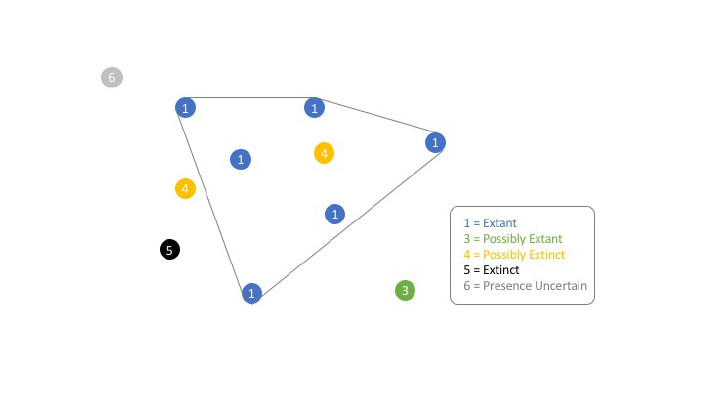
Figure 2: Schematic representation of point coding and calculation of
EOO.
7.2 Area of occupancy (AOO)
Area of occupancy (AOO) is a scaled metric that represents the area of suitable habitat
currently occupied by the taxon. Area of occupancy is included in the IUCN Red List
Criteria for two main reasons:
1. AOO is a measure of the ‘insurance effect,’ whereby taxa that occur within
many patches or large patches across a landscape or seascape are ‘insured’
against risks from spatially explicit threats. In such cases, there is only a small
risk that the threat will affect all occupied patches within a specified time
frame. In contrast, taxa that occur within few small patches are exposed to
elevated extinction risks because there is a greater chance that one or few
threats will affect all or most of the distribution within a given time frame.
2. There is generally a positive correlation between AOO and population size.
AOO can therefore be a useful metric for identifying species at risk of
extinction because of small population sizes when no data are available to
estimate population size and structure.
To ensure valid use of the criteria and maintain consistency of Red List assessments
across taxa it is essential to scale estimates of AOO using 2 x 2 km grid cells. Estimates
of AOO are highly sensitive to the spatial scale at which AOO is measured. Thus, it is
possible to arrive at very different estimates of AOO from the same distribution data if
they were calculated at different scales. The thresholds of AOO that delineate different

categories of threat in criteria B2 and D2 are designed to assess threats that affect areas
in the order of 10-2,000 km², and therefore assume that AOO is estimated at a particular
spatial scale. The Red List Guidelines require that AOO is scaled using 2 x 2 km grid
cells (i.e., with area of 4 km²) to ensure that estimates of AOO are commensurate with
the implicit scale of the thresholds. Use of the smallest available scale (finest grain) to
estimate AOO (sometimes erroneously called "actual area" or "actual AOO") is not
permitted, even though mapping a species' distribution at the finest scale may be
desirable for purposes other than calculating AOO. Habitat maps with higher resolutions
can be used for other aspects of a Red List assessment, such as calculating reduction in
habitat quality as a basis of population reduction for criterion A2(c) or estimating
continuing decline in habitat area for B2(b), as well as for conservation planning.
For more information on AOO, see section 4.10 in the Red List Guidelines.

8 Generating a distribution map
8.1 Software and formats
There are several ways in which maps can be generated, and the preference is always to
generate digital maps (i.e., maps in the form of Shapefiles, or KML or ESRI File
Geodatabase etc…). There is a suite of software which can be used to do this, namely:
1. ArcGIS desktop – licensed software. IUCN can provide a license for this under
strict terms of use (contact the IUCN Red List for further information), provided
Figure 3: Two examples of the distinction
between extent of occurrence and area of
occupancy; (A) is the spatial distribution
of known, inferred or projected sites of
occurrence, (B) shows one possible
boundary to the extent of occurrence,
which is the measured area within this
boundary, (C) shows one measure of area
of occupancy which can be measured by
the sum of the occupied grid squares.

the software is being used for the assessment of a taxon, or for such similar
purpose.
2. QGIS – free open-source software
3. Google Earth Pro – free software.
4. Google My Maps in Google Drive – free software.
The IUCN Red List Unit and Red List Partners have developed a series of tools to make
the mapping process easy for Assessors. These resources can be found on the IUCN
Spatial Data Resources page on the IUCN Red List website.
8.2 Tools
The IUCN Spatial Data Resources page on the IUCN Red List website provides access
to a range of tools to help you to create distribution maps for taxa being assessed for
The IUCN Red List. Some important tools worth mentioning here are:
● RedList Toolbox: This is designed for use with ArcGIS Desktop, and includes
documentation to help Assessors generate a digital map in the appropriate format
and structure.
● GeoCAT: RBG Kew developed this free, online tool to allow users to create
maps using point data. It supports the IUCN Points standards, and also includes
tools that automatically calculate EOO and AOO (based on the point data).The
polygons from GeoCAT are not suitable as maps.
● IUCN Red List Mapping Tool (Freshwater species): This free, online
mapping tool was developed for creating distribution maps for inland water
species. It is integrated with SIS (i.e., it links to taxa within existing working sets
in SIS) and it includes HydroBASINs, allowing users to map to those areas.
Please contact the Freshwater Biodiversity Unit for more information.
8.3 Standard GIS layers / basedata
A recommended list of GIS layers (or ‘spatial basedata’) is available for Assessors to
use when they are creating distribution maps. These layers include, for example, the
Country layer, which should be used as the base-layer for mapping taxa to countries. It
is important that Assessors use these recommended spatial data layers (basedata maps)
to ensure that the generated maps comply with other tools within the Red List, and also
to standardize the maps displayed on the IUCN Red List.
More information on these base-layers can be found on the IUCN Spatial Data
Resources page on the IUCN Red List website.
These base-layers may change, or decisions may be taken by the IUCN SSC Red List
Technical Working Group to recommend different base-layers; therefore, it is strongly
recommended that Assessors check the IUCN Red List website for current guidance and
information.
8.4 Mapping consistency
The following recommendations are provided to ensure consistency between taxa being
mapped:
1. How to convert points to polygon ranges: due to the nature of a taxon it is at the
expert’s discretion to decide on the method of creating a polygon from points, if
they would like to do it. Some suggestions (they can be used singly or in
combination) are:
a) Buffering the points to a taxon’s appropriate range. For example,
consideration of the taxon’s life history, such as roaming range, feeding
range, breeding or migration.
b) Using habitat as a guide to map to known areas around the points.
c) Using spatial data from other ranges of other taxa, for example a prey or
host species.
d) Bathymetry and altitude selection. Note that raster files cannot be
submitted but conversion from raster to polygon is possible in ArcMap and
QGIS software.
2. Overlapping polygons within a taxon’s range: whilst it is entirely feasible for a
species to have overlapping polygons with different attributes (e.g. Presence,
Origin, different citations, etc…), it is important to ensure that this is actually
really the case, and not a mistake during the mapping process. In order to prevent
discrepancies, check whether the polygons overlap each other in joining areas. A
taxon’s subspecies, varieties and subpopulations within the taxon’s range may
overlap. Overlapping polygons can introduce geometry challenges, including
during analysis.
3. Mapping subspecies, varieties and subpopulations: when mapping subspecies,
varieties and subpopulations these ranges should be included within the species
polygon.
4. Restricted ranges: when mapping to a small area, such as a cave, small
HydroBASIN or island it is import to keep in mind the scope of the taxon and its
habitat and ecology, while not generalizing the range as this may inflate the
Minimum Convex Polygon (MCP) and change the extent of occurrence. For

inland water assessments, as with other groups, the map should represent the best
possible representation of the distribution. For those inland water taxa with
distributions more restricted than the finest scale HydroBASINs layer, the range
should be mapped as a polygon reflecting e.g., the location of a cave or small
wetland to which a taxon is restricted, rather than generalising to finest scale
HydroBASIN layer.
5. Island taxa: When a taxon is present on an island it is important to state the island
in the attributes due to organisations using different global country base layers in
which some may not have the island you have selected.
6. Marine taxa: Due to the dynamic nature of the marine biome it is important to
take bathymetry into account. Bathymetry ranges, like those in the habitat
classification scheme, can be found on the Spatial Data Resources page. If for
example, a taxon is found between 5-20 m depth then the polygon can be clipped
to the 25 m bathymetry and the 5 m bathymetry can be erased.
7. Projections: Each taxon’s spatial data is required to be projected (i.e., to a set
coordinate system). This enables the taxon’s spatial data to be applied to other
spatial datasets for integration and storage. The recommended projection for the
IUCN Red List is WGS84. To check the projection of a file go to the files
properties in ArcMap and check the Source tab. If the “Geographic Coordinate
System” says <Undefined>, you can use the Define Projection (Data
Management) tool. If the “Geographic Coordinate System” is something other
than the WGS_1984 projection you can convert it using the Project tool.
8. Smoothing: Smoothing a polygon removes sharp angles in the polygon and is
used for aesthetic and visual reasons. If this tool is used, please ensure that it does
not affect the coverage of the taxon’s spatial range.
For tools, general guidance and information on best practices for mapping ranges please
refer to the IUCN Red List Spatial Data Resources page.
8.5 Sensitive species guidelines
A taxon’s map will not be shown or made publicly available when the data_sens field
contains a ‘Y’ (this means that the specific taxon polygon is marked as being sensitive).
Information on why this polygon or point is sensitive should be recorded in the
sens_comms attribute (see table 2). A generalized polygon may be used instead; there
are two methods to consider depending on the situation:

● Buffer: a buffer of a minimum of 10 km when more than one point is available
(the buffer distance can be larger, e.g. the range could be mapped to country-
level).
● Irregular polygon: if only one point is provided then a round buffer would show
the species to be in the centre. An irregular shaped polygon would therefore
show approximately where the taxon is distributed but generalized enough to
avoid giving away its exact location.
For further details see the IUCN Red List policy on Sensitive Data Access Restrictions.
9 What will happen to your map data?
Once distribution map data have been checked and processed, and are part of assessments
that are being published on the IUCN Red List, the data are used in the following way:
● Points and polygons are displayed on the IUCN Red List website, via the Map
Browser, which is an interactive tool.
o There is a map icon on every taxon page on the IUCN Red List website,
which opens the Map Browser.
o The spatial data is projected to WGS84/ Mercator for display on the map.
● Points and polygons are used to determine EOO – using an MCP around the
points/polygons.
● The points and polygons are used to generate images of the maps, using the Map
Batcher, which presents them in a format for use in workshops, presentations, the
PDFs of the assessments, etc.
● The data are also submitted to Integrated Biodiversity Assessment Tool (IBAT):
IBAT provides a basic risk screening on biodiversity. It draws together information
on globally recognised biodiversity information drawn from a number of IUCN’s
Knowledge Products. The IUCN Red List of Threatened Species data are provided
in a hexagonal grid format, as well as a full download of the spatial data depending
on type of user access.
● Spatial data are made available for download individually, in bulk, or via an API
for non-commercial use.
● Used in data analysis e.g. species richness maps, climate change vulnerability
projections. In such circumstances, the spatial data used should be referenced and
also credited appropriately.
● The Country of occurrence is not displayed in map, but is published in the taxon’s
fact sheet on the Red List
● Maps that are marked as Sensitive in the map file data (i.e. data_sens field is TRUE)
are not displayed on the IUCN Red List website, or made available, unless special
permission has been granted.

● The data are also made available through an API (which is an interface through
which the Red List data can be queried and used programmatically). Access to the
API is granted through a token, to provide some level of control.
9.1 Countries of occurrence (COO) data
Countries of occurrence (COO) information is displayed on the IUCN Red List website.
This information is used to support the website’s functionality (especially country
searches) and to allow basic analyses (e.g., endemism).
9.2 Legend combinations from distribution codes
Different combinations of the Presence, Origin and Seasonality codes are used to create
legends for the final distribution map.
The list of distribution codes used for the legends can be found on the Spatial Data
Resources page on the IUCN Red List website.
10.0 Updates regarding Spatial Data
10.1 Presence Codes (last updated 2014)
Presence codes updated with new definitions. Data prior to this change will remain and
updated as re-assessments take place.
10.1.1 Implications of updated Presence for existing spatial data
Some distribution maps published on the IUCN Red List were created using a
previous version of the Presence codes. The implications of the current Presence
codes (as defined in Table 4) on existing spatial data that have not been migrated yet
are outlined below.
1. All polygons or points currently coded using the old Presence 2 (Probably
Extant) should be recoded as Presence 1 (Extant).
2. For inland water taxa:
(i) HydroBASINs coded as Presence 2 should be recoded as Presence 1
if they fall within an MCP drawn around all existing Presence 1s, or
as Presence 3 (Possibly Extant) if they fall outside of this MCP.
(ii) If all HydroBASINS in the map are coded as Presence 2 (e.g., where
point locality data are unavailable and distributions have been
inferred), you will need to decide which Presence code (1 or 3) is

appropriate for occurrence of the taxon in each of these areas. Please
note that if Presence 3 is used for all HydroBASINs on the map, this
may have consequences for the taxon’s Red List assessment (e.g.,
EOO cannot be calculated if no records exist for the taxon, which will
affect any taxa currently assessed under criterion B1); in such cases a
reassessment will be required.
If unsure about the above, please contact the Red List Unit for further
clarification.
3. Some polygons or points currently coded as 3 may need review to see whether
they should be recoded as 1 (because they may actually represent inferred or
projected sites of occurrence). This would not affect EOO estimation if such
records are within the current MCP, but obviously would if such records fall
beyond the current MCP.
4. Some polygons or points currently coded as Presence 6 (Presence Uncertain)
may need to be reassigned to 1 or 4 (see Note 3 attached to Table 4)
See Figures 1 and 2 in section 7.0 for more information on recoding Presence codes
and on using the Presence codes for EOO calculations.
10.2 Origin code Assisted Colonisation (last updated 2016)
New Origin code (6) added for species subject to intentional movement and release
outside its native range to reduce the extinction risk of the taxon.
10.3 Legend Update (last updated 2016)
The legend was improved to contain all the values for Presence, Origin and Seasonal.
The new list can be found on the IUCN Red List Spatial Resources page. Previously, all
the different legends (or distribution codes combinations) were not being displayed on
the website, but now, they all are.
11 Abbreviations, acronyms and definitions
AOO: Area of occupancy. A parameter used in the IUCN Red List Categories and Criteria
to measure the area within the 'extent of occurrence' which is occupied by a taxon,
excluding cases of vagrancy (see section 4.10 of the Red List Guidelines).
Assisted colonisation: The intentional movement and release of an organism outside its
indigenous range to avoid extinction of populations of the focal taxon. Within the mapping
process, the assisted colonisation range should be coded in the attributes as Extant
(Presence = Extant, Origin = Assisted Colonisation).

EOO: Extent of occurrence. A parameter used in the IUCN Red List Categories and
Criteria to measure the spatial spread of the areas currently occupied by the taxon (see
section 4.9 of the Red List Guidelines).
MCP: Minimum Convex polygon. This is the smallest polygon in which no internal angle
exceeds 180 degrees and which contains all sites of known, inferred and projected
occurrence.
Polygon: A map feature that bounds an area at a given scale, such as a country on a world
map or a district on a city map.
Projection: A projection uses the datum as a point of reference, it's location on Earth.
In GIS, there are two types of "coordinate systems": Geographic Coordinate System: a
georeference or location of the map on the globe and Projected Coordinate System: how
the map is displayed. The standard Geographical Coordinate System the IUCN Red List
uses is WGS 1984.
